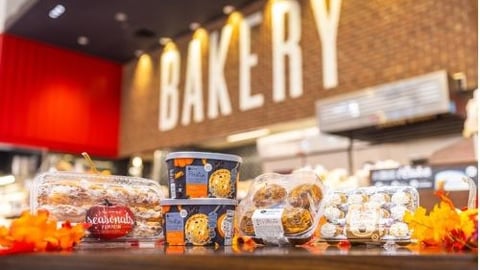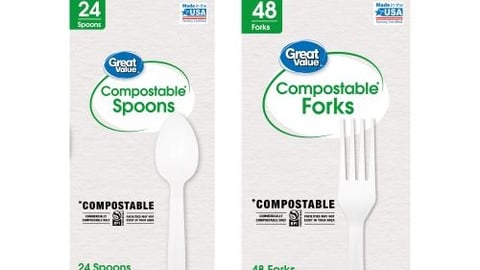How Retailers Can Boost Their Private Label Packaging
Along with all of their other concerns regarding private label products, retailers shouldn’t forget to pay close attention to packaging design, which can make a significant difference in how these items are perceived on the shelf – and whether they’re ultimately purchased.
“Food retailers now have the resources and clout to be just as innovative as national brands when it comes to packaging,” asserts Peter Boosalis, VP of business development at Sussex, Wis.-based global marketing experience company Quad. “This includes innovations that enhance food preparation and end-product performance. The challenge is pricing. These innovations in packaging substrates or structure are not cheap, but we’ve seen many owned-brand manufacturers step up to the plate and deliver a product that may outperform national brands, at a better price and without sacrificing quality.”
[Read more: "SPECIAL REPORT: The Latest Food Packaging Innovations"]
Adds Boosalis: “The most important thing owned-brand marketers need to do is establish a consistent package graphic architecture that’s robust and flexible and still maintains a consistent look. They can enhance visual recognition by practicing strategic package design. Data is a key component here.”
Alexis Guetzlaff, director of marketing-food and NAB, AMN at Perrysburg, Ill.-based Owens-Illinois, a glass container manufacturing company, agrees that retailers’ brands need to be able to compete effectively with the brands that consumers already know and love – and she believes that packaging should be a key part of any private label strategy.
“With the rise of the private label/owned-brand equities, it is important for retailers to execute at the shelf on par with the national brands, and in some cases exceed the national-brand positioning,” notes Guetzlaff. “By activating high-quality, thoughtfully designed packaging, retailers will be able to continue their strong growth trajectory and high competitiveness at the shelf.”
When considering how best to package a product, she advises: “The most important thing to consider is the consumer experience. It is important to employ shelf-back thinking and be very clear about the consumer each product/brand is targeting. What does that consumer want from the product, and how will it fit into their lives? Think about how a consumer relates to the brand and how a retailer can drive loyalty and advocacy. [O]ften, brand owners – including retailers – consider this when working on the graphics they put on a package, but it is important not to forget what the actual package says about your product or what the consumer feels it says about them.”
For his part, packaging business expert David Marinac stresses thinking outside the box – literally. “Stop trying to follow and copycat everyone else,” he urges. “Explore other options besides chasing the big boys in the industry. Many retailers don’t understand there are other styles and materials they could be using that will not only protect their product better, but help their sales and profits.”
Sustainability a Potential Sticking Point
For retailers that want to show their commitment to sustainability in their private label packaging, however, cost may prove too high an obstacle.
While acknowledging that “retailers are keen to be more sustainable and they’re open to new packaging ideas that support this aim,” Michael Duffy, global creative director at Equator Design, a global packaging design agency with its headquarters in the U.K. city of Manchester, points out that “the biggest barrier to being more responsible when it comes to materials is cost. Everybody thinks that retailers just have to choose to be more sustainable, but the reality is, it adds to the cost of goods which, in turn, erodes profit. This then stops them from being responsible, even though they know they should be. So, when you’re looking at some of the more cutting-edge solutions, like bio-based and regenerative materials, cost could be a sticking point, as it can affect retailers’ ability to be competitive in a price-sensitive environment – and, right now, even affluent consumers are making savvier choices due to the cost of living.”
Instead, Duffy suggests: “What retailers can do is make sustainability a part of the brand story and center that in their packaging design. Communication is key. A recent McKinsey and NielsenIQ study found that, over the past five years, products making ‘ESG-related claims’ averaged 28% cumulative growth versus 20% for products that made no such claims. It also found that less common on-pack claims are associated with greater benefits and that combining multiple claims conveys a sense of authenticity. The caveat to this, of course, is that the retailer must actually be taking meaningful action that backs up their claims. Consumers are not forgiving of greenwashing!”
He continues that “it doesn’t cost the earth to be proactive about educating and supporting shoppers on how to be more sustainable – whether that’s emphasizing the reusability of a piece of packaging through social media campaigns or getting creative with your point-of-sale displays – or drawing attention to how it can be disposed of or recycled on pack via callouts and QR codes.”
Further, in the area of eco-communication tactics, “it could be time to bench the ‘symbol menu’, replacing it with an actionable information approach,” advises Duffy. “There is a great deal of confusion around recyclable symbol claims, so, when it comes to end-of-use packaging communication, there needs to be a clearer directive for consumers of what they should/should not do.”
All that being said, there are some solution providers that aim to help achieve grocers’ packaging goals affordably.
“Food retailers can improve private label packaging by partnering with co-manufacturers that offer sustainable and recyclable packaging solutions, without compromising on unique and engaging packaging designs,” notes Tania Jacomini, marketing manager at Denton, Texas-based Tetra Pak U.S. and Canada. “For example, Tetra Pak Custom Printing is the first and only premium ink jet-based carton package printing solution to offer brands an innovative, cost-effective and customizable option while providing all the environmental benefits of paper-based beverage cartons. This innovative technology allows brands to unleash their creative potential by providing increased flexibility to create impactful promotional campaigns and an opportunity to diversify their advertising strategies.”






